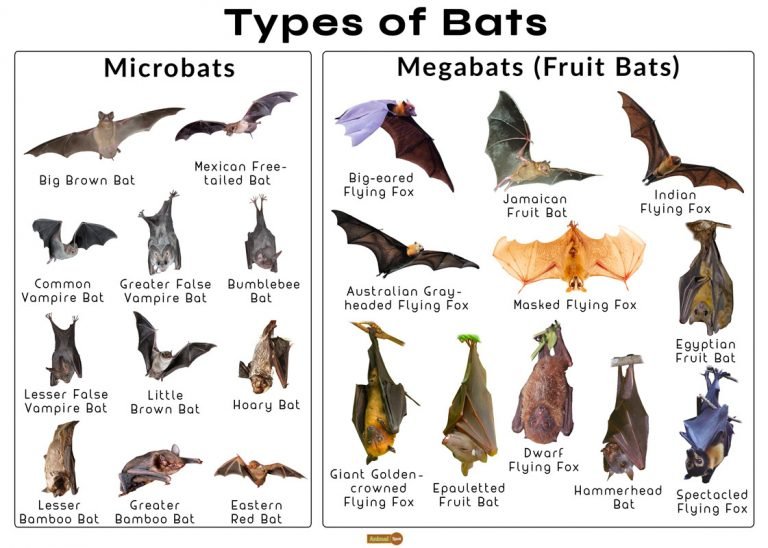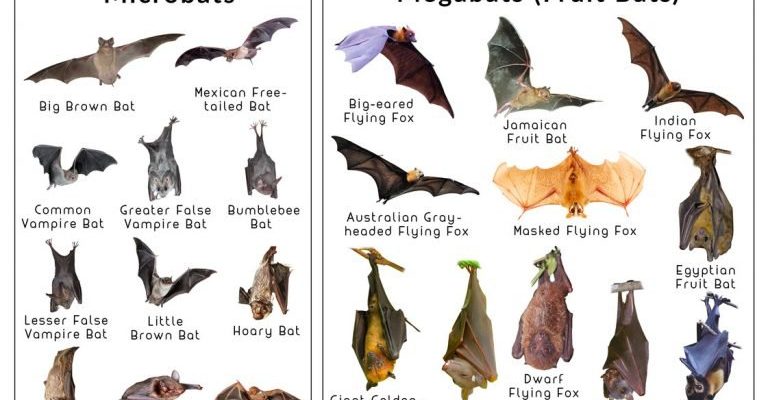
So, let’s dive into this fascinating topic. We’ll explore 10 animals that share traits with bats, from flying squirrels to birds of prey. You might find yourself surprised by their quirks and the ways they differ! Whether you’re a nature enthusiast or simply curious about the animal kingdom, this journey through the night sky and treetops will shed light on the wonders of our world.
1. Flying Squirrels
Flying squirrels may not soar like bats, but they have a cool trick up their sleeves. They glide through the air thanks to a flap of skin called a patagium, which stretches from their wrists to their ankles. This helps them leap from tree to tree, similar to how bats move through their environments.
Here’s the thing: while bats have membranes for wings and can flap around, flying squirrels can’t truly fly—they glide. You might notice that flying squirrels are more active during the night, just like their bat cousins. But unlike bats, they don’t have the ability to echolocate. Instead, they rely on their keen eyesight and sense of smell to navigate their surroundings.
If you spot a flying squirrel, you’ll also note their larger eyes compared to bats, perfect for nighttime foraging. Plus, these little critters are typically covered in fur, which can give them a fluffier appearance than a smooth-skinned bat.
2. Sugar Gliders
Sugar gliders are adorable little marsupials that also take to the skies. Like flying squirrels, they have a patagium that allows them to glide between trees. Their tiny size and big eyes make them incredibly cute, but they’re not related to bats at all.
So, why do they remind us of bats? Well, both animals are nocturnal and have similar gliding abilities. However, sugar gliders are more closely related to kangaroos than to bats. Another major difference is their diet: sugar gliders feed on nectar and fruits, whereas bats often munch on insects or, in some cases, fruit or nectar like fruit bats.
If you ever encounter a sugar glider, you’ll find they have a charm all their own—just think of them as the cuddly cousin of bats.
3. Flying Fish
Now, you might be wondering how a fish fits into this mix! Flying fish take to the skies, or rather, the air above the ocean. When threatened by predators, they can launch themselves from the water and glide through the air for impressive distances.
Though they don’t fly like bats do, their ability to glid through the air might seem similar at first glance. What sets them apart is their anatomy; instead of wings, they have specially adapted fins that enable them to glide long distances. Flying fish are also completely aquatic and have a diet that consists mainly of plankton and small shrimp.
So, while both flying fish and bats exhibit gliding behaviors, their environments and physical features are quite different. Next time you’re at the beach, remember that there are some creatures taking flight just above the water’s surface!
4. Hemiptera (True Bugs)
You might not think of bugs when considering animals similar to bats, but some true bugs like the leafhoppers or planthoppers can share similarities in movement. These insects can leap great distances and glide using their wings, similar to how bats navigate through the night sky.
Unlike bats, however, hemiptera have wings that fold flat against their bodies when not in use, providing a streamlined look. These bugs are also much smaller and often rely more on their jumping ability than sustained flight. Their diet varies significantly, as many are sap-sucking pests rather than hunters like bats.
So, while they share some movements in the air, don’t confuse them with bats—they’re on a different level entirely, both in size and lifestyle.
5. Birds: The Masters of Flight
Birds, of course, are the most obvious relatives of bats when it comes to flying animals. Like bats, many birds are nightly hunters, zipping through the skies in search of food. You might think they’re quite similar due to their wings and ability to fly.
But here’s the kicker: birds are warm-blooded while bats are mammals, and their wing structures differ significantly. Birds have feathers and a bone structure in their wings which allow for flapping, while bats have flexible membranes that enable them to maneuver with precision.
Take owls, for example—these nocturnal birds boast incredible night vision and the ability to hunt silently, much like certain bats. So while they both belong to the world of flight, their methods and adaptations set them apart.
6. Colugos (Flying Lemurs)
Colugos, or flying lemurs, are fascinating creatures that somewhat resemble bats in their gliding abilities. Despite their misleading name, they’re not lemurs at all! These mammals are known for their large membranes that stretch from their limbs, allowing them to glide gracefully among trees.
Let me explain why they’re intriguing: colugos can glide nearly 150 meters (or about 490 feet) in one leap. Their body structure is entirely different from that of bats; they have a unique skeletal design that supports their gliding capabilities. Plus, colugos are primarily herbivorous, foraging on leaves and flowers, while bats usually feast on insects.
So, while they share the ability to glide through the night, their diets and relationships with trees really set them apart.
7. Flying Reptiles: Pterosaurs
Now we’re talking about ancient animals! Pterosaurs are often compared to bats because they were among the first flying vertebrates. These prehistoric creatures had wings made from skin and muscle, similar to bats, allowing them to soar through the skies long before birds existed.
However, despite their similarities, pterosaurs are not mammals. They belong to a completely different branch of the family tree and were reptiles. Their size also varied hugely, from small ones the size of a sparrow to gigantic ones with wingspans larger than a car!
The way pterosaurs hunted and their anatomy—like their beak shapes and body structures—were distinctly different from those of bats. So while they might give off a similar vibe, the comparison is pretty much just in the flight arena.
8. Shrews and Moles: Underground Ninjas
Shrews and moles might not fly at all, but they share some interesting characteristics with bats, especially when it comes to their nocturnal habits and diet. Both shrews and moles are active at night and rely on their keen senses to navigate the dark.
One major difference you’ll notice is that while bats have developed echolocation, shrews have a strong sense of smell and touch. Moles, on the other hand, spend much of their lives underground, digging tunnels in search of insects.
While they might not be flying around at night, their unique adaptations for hunting in the dark help them survive just like bats do. So, in a sense, these little creatures are like the *grounded* cousins of bats.
9. Fruit Bats
Fruit bats, also known as flying foxes, are an excellent example of how diverse the bat family can be compared to other similar animals. These bats are known for their large size and long snouts, which help them feed on fruit and nectar.
What’s fascinating is that while fruit bats can glide gracefully, they aren’t hunters like their insectivorous relatives. Instead, they play a vital role in pollinating flowers and dispersing seeds, making them essential to many ecosystems.
When you observe them, you’ll notice their oversized wings and furry appearance, which distinguishes them from smaller bats. Their overall lifestyle and eating habits create a distinct separation from other flying animals, reinforcing the uniqueness of bats in the animal kingdom.
10. Drones: Nature’s Artificial Bats
Okay, hear me out: drones! While they’re manmade, these flying gadgets can remind us of bats in function and design. Drones are often used for nighttime photography or surveillance, just like bats navigate and hunt during the night.
Drones can’t echolocate like bats, but many have sophisticated sensors and cameras that allow them to navigate in the dark. When you think about the purpose of drones in capturing images or monitoring environments, it’s kind of like how bats contribute to the ecosystem by controlling insect populations.
While drones are technology, their flying abilities and nocturnal roles have made them somewhat reminiscent of bats in today’s high-tech world.
In closing, it’s really fascinating to explore the various animals that share traits with bats. From gliders soaring between trees to nocturnal creatures hustling underground, each one has its unique mechanisms for survival. Understanding these differences can help us appreciate the rich tapestry of life around us, reminding us that even in a world full of varied species, there’s always something connecting us back to the remarkable bats. So the next time you spot a bat in your backyard or a flying squirrel in the trees, remember the amazing family of creatures they belong to!

